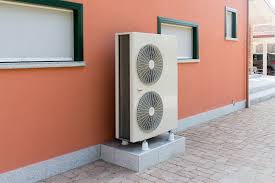If you are considering investing in the installation of a heat pump, correct installation is crucial for optimal performance and long-term durability. In assessing the performance of the heat pump (tepelné čerpadlo) installation involves evaluating the various factors that will make sure you get the most efficient unit and efficiently. Here’s what you should be aware of:
1. Professional Credentials:
The first step in evaluating heat pump installation quality is to verify the credentials of the installer. Verify that they are certified, insured, and recognized by relevant industry bodies such as The North American Technician Excellence (NATE) or similar organisations. Professionals who are certified will be more likely to adhere to industry guidelines and the best practices.
2. System Sizing:
The proper system sizing is vital for efficient operation. Oversized or undersized heating pump could result in an inefficiency, higher energy bills, and reduced comfort. Installers must conduct an extensive load calculation, typically employing manual J method to determine the right size of your home based on variables like insulation windows, insulation, and climate conditions.
3. Quality of Equipment:
Examine the quality that the heating unit. Reputable brands typically offer better quality and reliability. Look for SEER (Seasonal Energy Efficiency Ratio) and HSPF (Heating Seasonal Performance Factor) ratings. Higher ratings typically indicate efficient systems. Also, ensure the equipment is put in place in accordance with the specifications of the manufacturer.
4. Installation Practices:
Proper installation practices are critical. The heat pump should be level and securely placed. Ductwork should be properly sealed and insulated to avoid energy loss. Check that refrigerant lines are correctly measured and lined with insulation. Poor installation can lead to problems such as leaks in refrigerant, reduced efficiency, and an early failure of the system.
5. System Testing:
Following installation, a reputable installer will conduct thorough system testing. This includes testing the refrigerant levels, checking the electrical connections and ensuring the thermostat operates properly. The system must be checked both in cooling and heating modes to verify that it functions efficiently.
6. Post-Installation Support:
A good installer will provide post-installation assistance. They should give clear instructions on operating and maintaining the heat pump and be available for any follow-up issues. A reputable contractor will provide a guarantee on the installation and the equipment work.
7. Customer Reviews and References:
Also, read customer reviews and ask for references. Previous clients can provide insights into the installer’s reliability in terms of workmanship, quality, and overall satisfaction. An experienced and reliable installer will receive positive feedback and be willing to provide the names of previous clients.
To determine the reliability of a heat pump installation is a process of evaluating the credentials of the installer, making sure that they are using proper sizing and installation procedures, as well as verifying system performance. By paying attention to these factors you can be sure that your system is operating efficiently and offers the best comfort for many the years to come.
